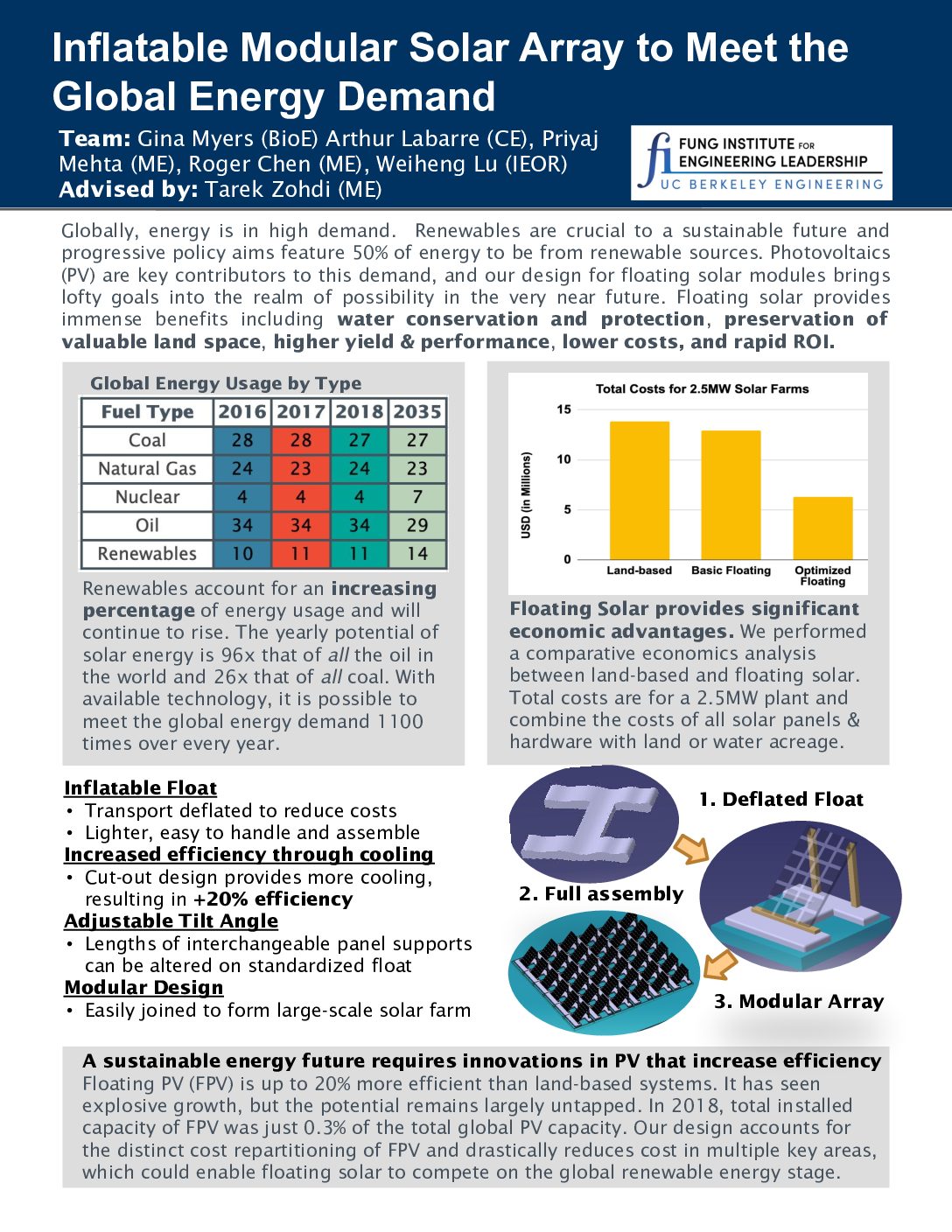Team: Gina Myers (BIOE), Arthur Labarre (CEE), Weiheng (Jarvis) Lu (IEOR), Priyaj Mehta (ME), Ronggen Chen (ME)
Advisor: Tarek Zohdi (ME)
Improved photovoltaic technology is essential to meet growing global energy demands. Floating solar offers numerous advantages over land-based, including increased efficiency via cooling, reduced evaporation and algal growth, and the financial and ecological benefits of facile installation and protecting undeveloped land. Our diverse team created a floating solar module for inland water bodies that is more energy and cost-efficient and easier to install than existing technologies. To accomplish this, our design incorporates an on-site inflatable floating structure, onto which the photovoltaic panels are mounted. This is a transformative innovation as it enables drastically lower transportation and installation costs.
Globally, energy is in high demand. Renewables are crucial to a sustainable future and progressive policy aims feature 50% of energy to be from renewable sources. Photovoltaics (PV) are key contributors to this demand, and our design for floating solar modules brings lofty goals into the realm of possibility in the very near future. Floating solar provides immense benefits including water conservation and protection, preservation of valuable land space, higher yield & performance, lower costs, and rapid ROI.
Renewables account for an increasing percentage of energy usage and will continue to rise. The yearly potential of solar energy is 96x that of all the oil in the world and 26x that of all coal. With available technology, it is possible to meet the global energy demand 1100 times over every year.
Floating Solar provides significant economic advantages. We performed a comparative economics analysis between land-based and floating solar. Total costs are for a 2.5MW plant and combine the costs of all solar panels & hardware with land or water acreage.
A sustainable energy future requires innovations in PV that increase efficiency Floating PV (FPV) is up to 20% more efficient than land-based systems. It has seen explosive growth, but the potential remains largely untapped. In 2018, total installed capacity of FPV was just 0.3% of the total global PV capacity. Our design accounts for the distinct cost repartitioning of FPV and drastically reduces cost in multiple key areas, which could enable floating solar to compete on the global renewable energy stage.
Project Brief

← View all Capstone Projects





